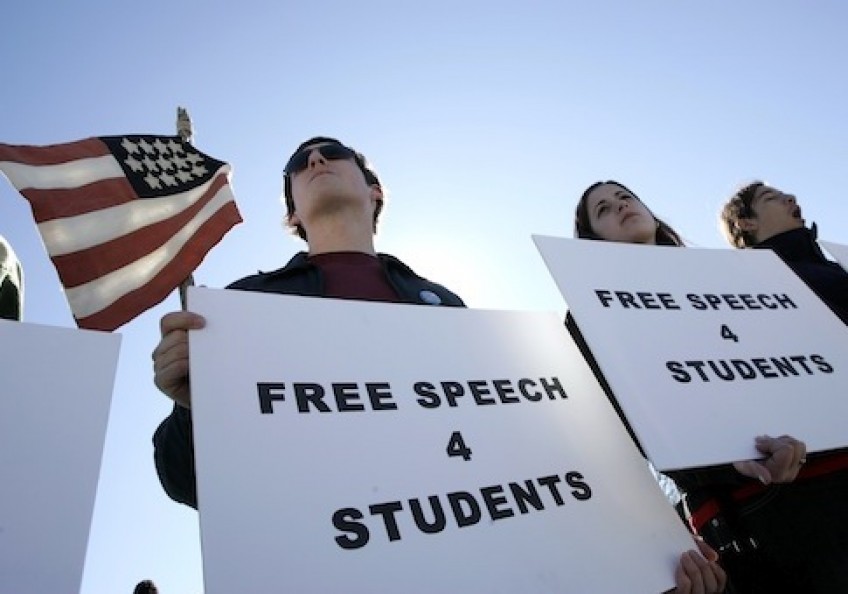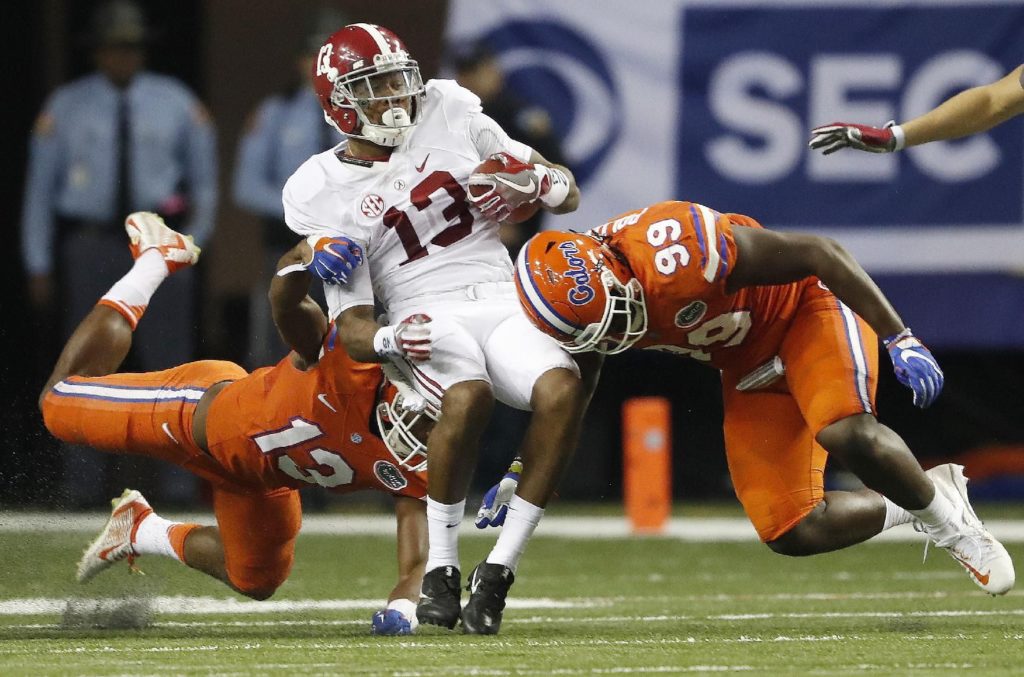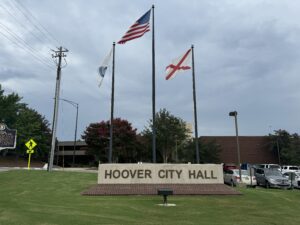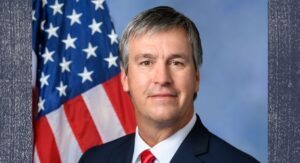Darryl Paulson: Do universities discriminate? Promoting ideological diversity, free speech in U.S. universities

In the previous three pieces, I have written about how university hiring policies have led to the virtual exclusion of conservatives on college faculties. We have seen how universities have wrapped students in a protective cocoon to prevent them from hearing speech that might be offensive with the use of speech codes, safe spaces, and micro-aggressions. Finally, we have seen how the academy has abandoned its mission of exposing students to diverse views and it some cases has actually encouraged students to shout down speakers with unpopular views. Can anything be done to encourage universities to fulfill their mission of fostering diversity in all areas, including ideological diversity? This will not be easy, especially in the age of Trump. Liberal college campuses are more likely to dig in their heels and protect the academy from the evils of Trumpism. The situation will probably grow worse, not better in most campuses. We need to foster ideological diversity for the same reasons we need racial and gender diversity. Universities should reflect the communities they represent, and this is clearly not the case today. Former Supreme Court Justice Lewis Powell argued in a 1978 case that diversity was essential to a universities mission. The more diverse the faculty and student body, the more robust will be the exchange of ideas. Yale University law professor Peter Schuck, in his book Diversity in America, contends that faculty have a “higher responsibility to our standards, ourselves and our disciplines that our preferences for ideological homogeneity and faculty-lounge echo chambers betray.” Echoing that sentiment, John McGinnis of Northwestern Law School writes that “liberal ideas might well be strengthened and made more effective if liberals had to run a more conservative gauntlet among their own colleagues when developing them.” The growing conservative attack on higher education by state legislators should come as no surprise. Decades of liberal orthodoxy have led conservative legislators to cut university funding and impose more programmatic controls. Why would any group provide financial support to another institution that constantly demeans conservative ideas and values and refuses to hire them on their faculty? It is in the best interest of universities to improve ideological diversity for two primary reasons: it is the right thing to do, and the university will reap financial benefits. Approaches to ideological Diversity Some universities, including Harvard, Penn State, the University of Texas and others have adopted “conservative coming out days.” I am not sure if this means that faculty who have not come out as conservatives should declare their philosophy, or that universities should seek out conservative faculty through affirmative action. Most conservatives would reject an affirmative action approach. Other universities are showcasing their commitment to ideological diversity by creating a specific faculty line for conservatives. The University of Colorado created an endowed chair in Conservative Thought and Policy. One or two conservative hires hardly indicates a commitment to a diversified faculty. I am not sure that any faculty member wants to be viewed as the “conservative hire.” Will students and faculty come to his or her office to see what a conservative looks like? Some conservatives have pushed for the adoption of the Academic Bill of Rights (ABOR) created by conservative activist David Horowitz and his Center for the Study of Popular Culture. The Bill of Rights contains eight provisions relating to faculty recruitment and hiring, free speech, research and campus speakers. A number of state legislatures have adopted the Academic Bill of Rights over the opposition of the American Association of University Professors, the American Federation of Teachers and several other groups. Critics argue that ABOR “infringes academic freedom in the very act of purporting to protect it.” Money, or the lack of money, is the lifeblood of a university. Some conservatives have urged alumna should withhold financial support for their university until it supports ideological diversity. Universities must end their policies of Groupthink which excludes conservative students and faculty from meaningful participation in university life. Speech codes and safe spaces must end, as well as the coddling of easily offended students. Safe places do not foster education, but create an unreal scenario of what students will face in the real world. Too often, universities have smothered free speech rather than fostering it. When students demand safe places, they often mean I disagree with your ideas, so shut up! Too often, universities have become home to Orwellian offices such as the Office for Diversity and Inclusion. That is fine for groups and ideas that have the universities seal of approval, but it often means the “not welcome” sign is posted for unpopular and undesirable groups. The election of Donald Trump has led to a surge in the sale of George Orwell’s 1984. New print runs have occurred to keep up with the growing demand for the book. I would just remind readers that Orwell’s book was not directed at any specific individual or philosophy, but at authoritarianism in all of its forms. The clash of ideas is the real mission of a university. How can the clash of ideas be heard if not all of the parties are allowed to express their views? How can universities promote diversity in race, gender and sexual orientation, but neglect ideological diversity? Ideological diversity will benefit the university intellectually, as well as financially. We must end the ideological homogeneity that dominates higher education and put an end to what Orwell called “smelly little orthodoxies.” ___ Darryl Paulson is Professor Emeritus of Government at the University of South Florida in St. Petersburg.
Playoff pairs: Unbeaten Alabama to face Washington, Ohio State against Clemson

In the end, true chaos never came to college football this season. Four teams that started near the top of the College Football Playoff rankings will play for the national championship. Alabama will face Washington in one semifinal and Clemson meets Ohio State in the other. None of them were ranked any lower than sixth since the selection committee started ranking teams in early November. Even after a wild finish to championship Saturday, selection Sunday went pretty much as expected. The committee stayed with the same top four it picked going into championship weekend, leaving out No. 5 Penn State even though the Nittany Lions won the Big Ten title game and beat Ohio State earlier in the season. The Buckeyes (11-1) are the first team to reach the playoff in its three-year history without winning their conference. The unbeaten Crimson Tide (13-0) is in the playoff for the third straight season and is the top seed for the second time. They will play the fourth-ranked Huskies (12-1) in the Peach Bowl in Atlanta on Dec. 31. Kickoff is set for 3 p.m. ET. Alabama has played Washington four times previously, twice in bowls and not since 1986. Huskies fans were holding up signs at games late in the season, proclaiming “We want Bama.” “Sometimes you got to be careful what you wish for,” Washington coach Chris Petersen said on ESPN. “I didn’t hold up that sign.” Saban and Alabama will be trying to win their fifth national championship in eight seasons, and second straight. Washington’s last national title came in 1991, when the Huskies were No. 1 in the final coaches’ poll. Petersen, the former Boise State coach in his third season with Washington, has never faced Saban and said he does not know him well. “I feel like I know him, I see him on TV so much,” Petersen said. No. 3 Ohio State is making its second playoff appearance and No. 2 Clemson (12-1) is in for the second consecutive season. The Buckeyes and Tigers will meet at the Fiesta Bowl in Glendale, Arizona, on Dec. 31. Kickoff is set for 7 p.m. ET. Ohio State won the first College Football Playoff after the 2014 season and Clemson lost to Alabama in last season’s championship game. Ohio State and Clemson have played twice before, both in bowl games. The last time was after the 2013 season. The one difference from last week’s top four and the final one was Clemson and Ohio State switched spots. So the Tigers will wear the home jerseys in University of Phoenix stadium instead of the Buckeyes. Selection committee chairman Kirby Hocutt said the decision came down not to Penn State and Ohio State, but the Nittany Lions (11-2) and Pac-12 champion Washington. The Huskies’ only loss was to Southern California and its nonconference schedule featured FCS Portland State, Rutgers and Idaho. Penn State played Pitt, Temple and Kent State in the conference and lost to the Panthers. The Nittany Lions also were beaten by 39 at Michigan in their last loss. Penn State finished the season on a nine-game winning streak to make a strong closing statement. “Had Washington had a stronger strength of schedule I do not think that conversation would have been as difficult,” said Hocutt, who is also the Texas tech athletic director. The selection protocol does not require the committee to pick conference champions or the winner of head-to-head matchups. “You can make arguments for and against so many teams,” Penn State coach James Franklin said on ESPN, adding his team was appreciative of the Rose Bowl bid it will receive. The rest of the New Year’s Six bowls were also announced: — Florida State (9-3) will play Michigan (10-2) in the Orange Bowl on Dec. 30. — Southern California (9-3) will play Penn State (11-2) in the Rose Bowl on Jan. 2. — Auburn (8-4) will play Oklahoma (10-2) in the Sugar Bowl on Jan. 2. — Western Michigan (13-0) will play Wisconsin (10-3) in the Cotton Bowl on Jan. 2. Republished with permission of the Associated Press.


